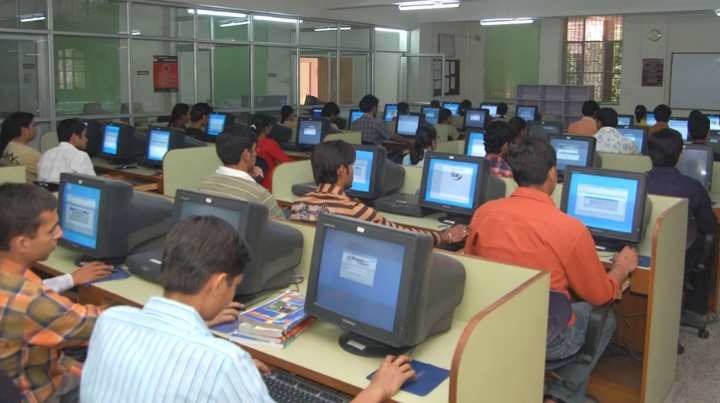Last Updated on April 22, 2023 by Uncle Pat Ugwu
With the increasing use of technology in the education sector, cybersecurity has become a crucial aspect that cannot be overlooked. Cybersecurity in education refers to the protection of computer systems, networks, and data from unauthorized access, theft, and damage.
As technology continues to advance, the threats to cybersecurity will only continue to grow. Educational institutions must prioritize cybersecurity to protect against potential attacks and ensure the safety and security of their systems and data.
This blog post highlights the importance of cybersecurity in education and the threats that pose risks to the security of educational institutions. We have previously published an article on tips to boost social media security.
The Importance of Cybersecurity in Education
Cybersecurity in education is essential because it ensures the protection of sensitive data such as student information, research data, and intellectual property. Educational institutions collect and store a vast amount of data, making them a prime target for cyber attacks. Cybersecurity measures safeguard the integrity, confidentiality, and availability of data, ensuring that it is not lost, stolen, or damaged.
Furthermore, cybersecurity ensures the smooth running of educational institutions. A cyber attack can disrupt the operations of an institution, causing chaos and financial losses. Educational institutions must implement cybersecurity measures to ensure that their systems and networks are protected from cyber-attacks.
The Threats to Cybersecurity in Education
Educational institutions face several threats to their cybersecurity. Phishing attacks are the most common threats designed to trick users into providing sensitive information such as login credentials, credit card details, and social security numbers. Phishing attacks can be delivered via email, social media, or instant messaging platforms.
Another significant threat to cybersecurity in education is ransomware. Ransomware is a type of malware that encrypts an institution’s data and demands a ransom in exchange for the decryption key. Ransomware attacks can cause significant financial losses and disrupt the operations of an institution.
Thirdly, educational institutions can be targeted by Distributed Denial of Service (DDoS) attacks. DDoS attacks overload an institution’s network with traffic, causing it to crash or become unavailable. DDoS attacks can cause significant disruption to an institution’s operations and can lead to financial losses.
Cybersecurity in Higher Education
Why Higher Education is Vulnerable to Cyber Attacks
Higher education institutions are particularly vulnerable to cyber attacks due to the large amounts of sensitive information they store. From research data to student and faculty personal information, universities and colleges are home to a wealth of data that can be targeted by cybercriminals.
In addition, the vast and complex IT infrastructure of higher education institutions can be challenging to secure, making them attractive targets.
Examples of Cyber Attacks in Higher Education
Higher education institutions have fallen victim to numerous cyber attacks in recent years. In 2018, for example, the University of Cambridge suffered a data breach that affected 3,500 staff and students. In 2019, the University of Utah was targeted by a ransomware attack that resulted in a $457,000 payout to the attackers.
These attacks not only compromise sensitive information but also disrupt the operations of the institution, causing financial losses and reputational damage.
Measures Taken to Improve Cybersecurity in Higher Education
Higher education institutions are taking steps to improve their cybersecurity measures. One measure is the implementation of multi-factor authentication (MFA) systems. MFA adds an additional layer of security to logins, making it more difficult for hackers to access sensitive information.
Another measure is the use of security information and event management (SIEM) systems. These systems monitor networks for suspicious activity, enabling institutions to respond quickly to potential threats.
Educational institutions are also investing in cybersecurity training for staff and students. This training helps raise awareness of potential threats and provides individuals with the knowledge they need to identify and avoid common cyber attacks.
Cybersecurity Awareness for Students
Importance of Cybersecurity Awareness for Students
As technology becomes more ubiquitous in the education sector, it is important for students to be aware of cybersecurity risks and how to protect themselves online. When students understood the risks and best practices for online safety, they can avoid falling victim to cyber-attacks that could compromise their personal information or disrupt their studies.
How to Educate Students on Cybersecurity
Educating students on cybersecurity can take many forms. One approach is to incorporate cybersecurity education into the curriculum, whether through standalone courses or as a component of other courses.
Another approach is to hold workshops and training sessions to provide students with practical tips on how to stay safe online. Additionally, institutions can leverage online resources such as webinars, videos, and tutorials to educate students on cybersecurity risks and best practices.
Best Practices for Students to Follow to Improve Cybersecurity
There are several best practices that students can follow to improve their cybersecurity:
- Use strong and unique passwords for all accounts, and enable two-factor authentication where possible.
- Avoid clicking on suspected links or downloading files from untrusted sources.
- Keep software and operating systems up to date to protect against vulnerabilities.
- Be cautious when sharing personal information online, and limit the amount of personal information shared on social media.
- Regularly back up important data to prevent loss in the event of a cyber attack.
- Use a virtual private network (VPN) when connecting to public Wi-Fi networks to protect against snooping and potential attacks.
Students can help safeguard their personal information and avoid falling victim to cyber-attacks with these best practices.
Institutions can cultivate a secure and safe learning atmosphere that promotes growth and progress by adopting strong cybersecurity protocols and instructing students on optimal online safety techniques. We also published an article on how to improve your teaching skills.
Final Thoughts
Cybersecurity is a critical component of ensuring safe and secure learning environments in educational institutions. With the increasing reliance on technology, educational institutions must remain vigilant in protecting sensitive data from cyber-attacks. The consequences of a breach can be significant, ranging from financial losses to reputational damage.
All members of educational institutions, including staff and students, to take an active role in promoting cybersecurity awareness and taking necessary precautions to protect against cyber attacks. With a shared commitment to cybersecurity, we can build a stronger and more resilient education sector that supports the success and well-being of everyone involved. These examples of digital literacy. will help you to understand cybersecurity in education the more.







